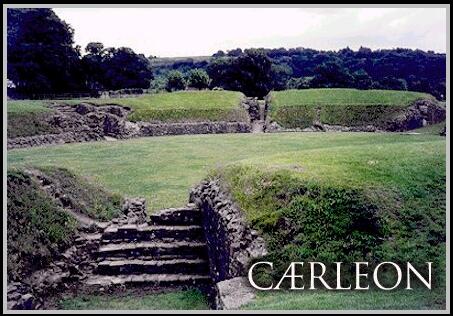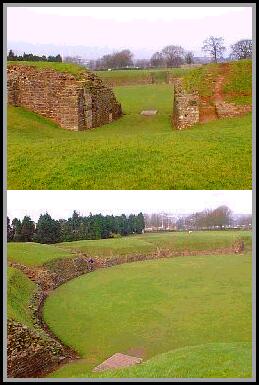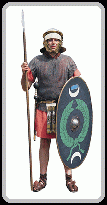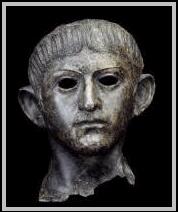

An ancient Roman town in South
Wales and home to the Second Augustan Legion
Caerleon is an enormously interesting place to anyone with an
interest, however small, in Roman history.
From 75AD it was home to the Second Augustan Legion, comprising
a 50 acre fortress housing 5,500 elite Roman infantry.
The amphitheatre was once considered, in mythology, to be King
Arthur's Round Table.
It was, of course, really a centre for more violent entertainment,
seating 6000 spectators eagerly watching the spectacle of gladiatorial
combat and military displays.
You can imagine what it would have been like as a gladiator waiting
for combat.

The amphitheater is built on
the typical oval plan, with passages dividing the earthern banks
into segments contained by buttressed stone walls which supported
tiers of wooden benches.
The entrance on the far side of the arena is one of two rooms
where gladiators or other performers would have waited before
entering the arena.
The Caerleon Roman amphitheatre
- a link with King Arthur's Britain?
The old town of Caerleon (or Caerleon on Usk - i.e. on the banks
of the River Usk in south Wales) has long been associated with
the story of King Arthur.
Geoffrey of Monmouth wrote his History of the Kings of Britain
around 1140 and this became one of the most important books of
the middle ages.
The book, supposed to have been based on an earlier history, is
the main source of all the later Arthurian legends.
King Arthur ranges far and wide over Britain but for several years
he is supposed to have held court at Caerleon.
The story of King Arthur's Round Table appeared in a work by the
chronicler Wace dating from 1155.
It is tempting to see the remains of the Roman amphitheatre in
Caerleon as a prototype Round Table.
Long after the withdrawal of the Roman legion (II Augusta), Caerleon
would have been one of the wonders of Britain.
The amphitheatre (built to hold an audience of up to 6,000 people)
would have been a very impressive ruin and a tangible link with
the dimly remembered, comparative security of Roman times.
The amphitheatre was excavated in in 1926/7 with support from
Britain's Daily Mail newspaper and the Loyal Knights of the Round
Table of America.
Little of the structure remains above ground level but the arena
and various entrances are well defined and very evocative.

The Romans in Wales
Caractacus, also known as Caradoc, was the leader of the Silures
tribe who at the time of the Roman invasion of Britain, inhabited
a large area of what is now Monmouthshire.

Caractacus' hostile attitude
to Roman authority was a contributory factor to the invasion of
Britain ordered by Emperor Claudius in AD 43.
There was a fierce battle in A.D. 50 at the hill fort at Hereford
Beacon between the Silures and the Roman army.
The battle was lost and Caractacus was captured and taken to Rome
where he so impressed Claudius that he was pardoned by the Emperor.
The Romans had completed their domination of South Wales by AD
90 and by that time they had erected a fort called Isca Silurum
beside the River Usk.
This became the fortress of the Second Augustan Legion and is
the most important Roman site in Wales.
Isca Silurum is now known as Caerleon-on-Usk and is a suburb of
Newport.
Caerleon held a force of approximately 6000 men and outside its
walls was erected a stone amphitheatre to hold gladiatorial combats.